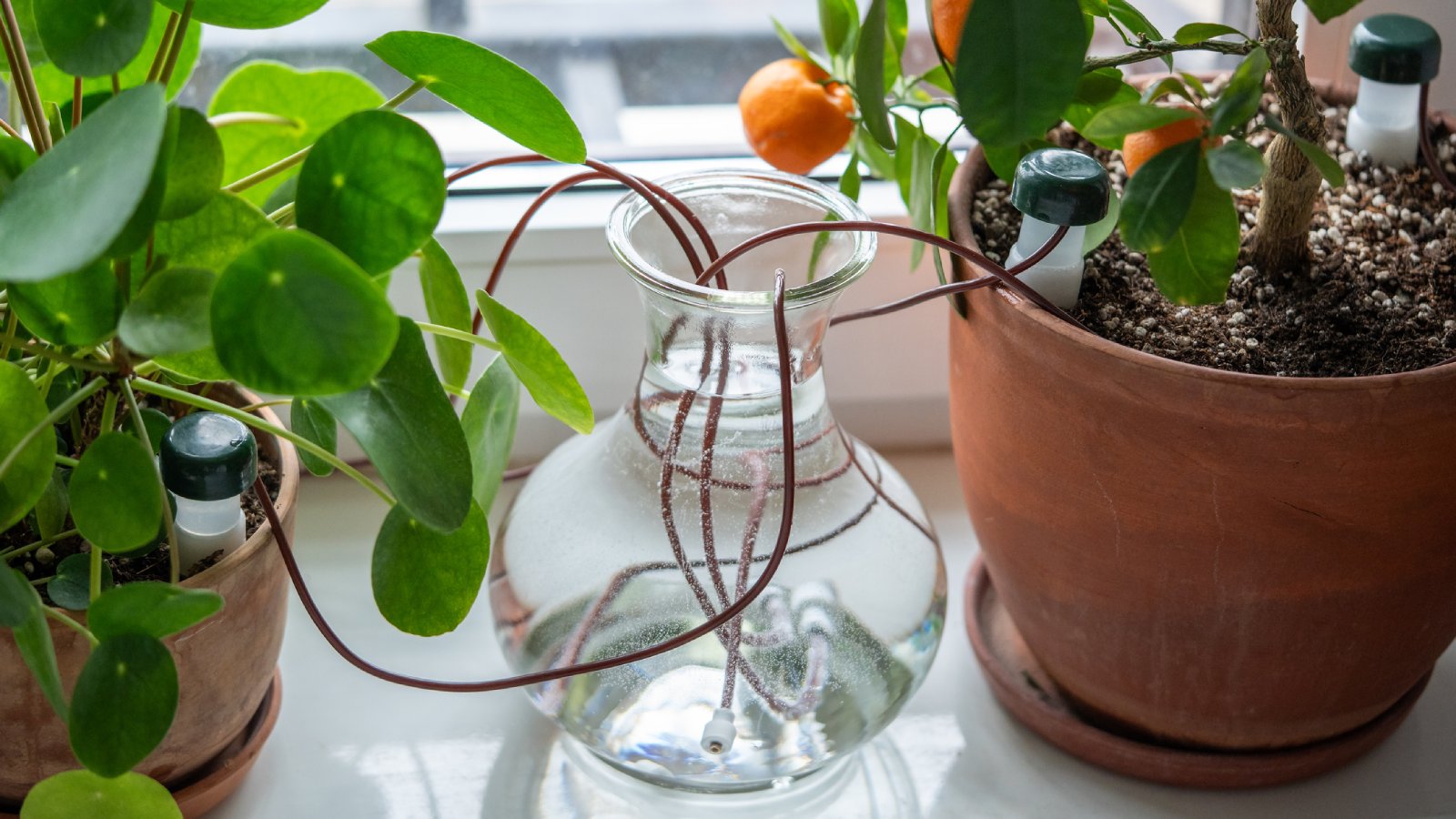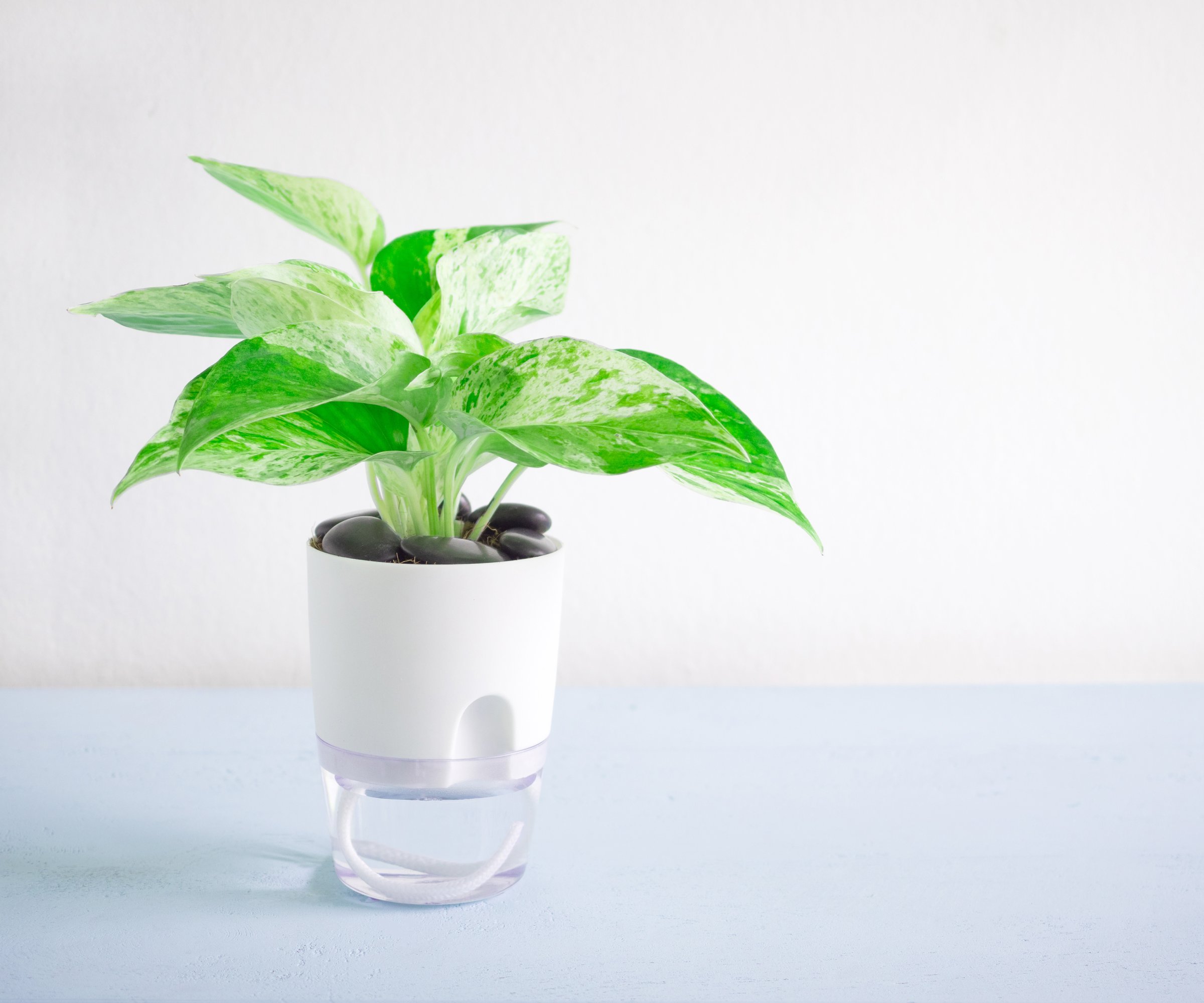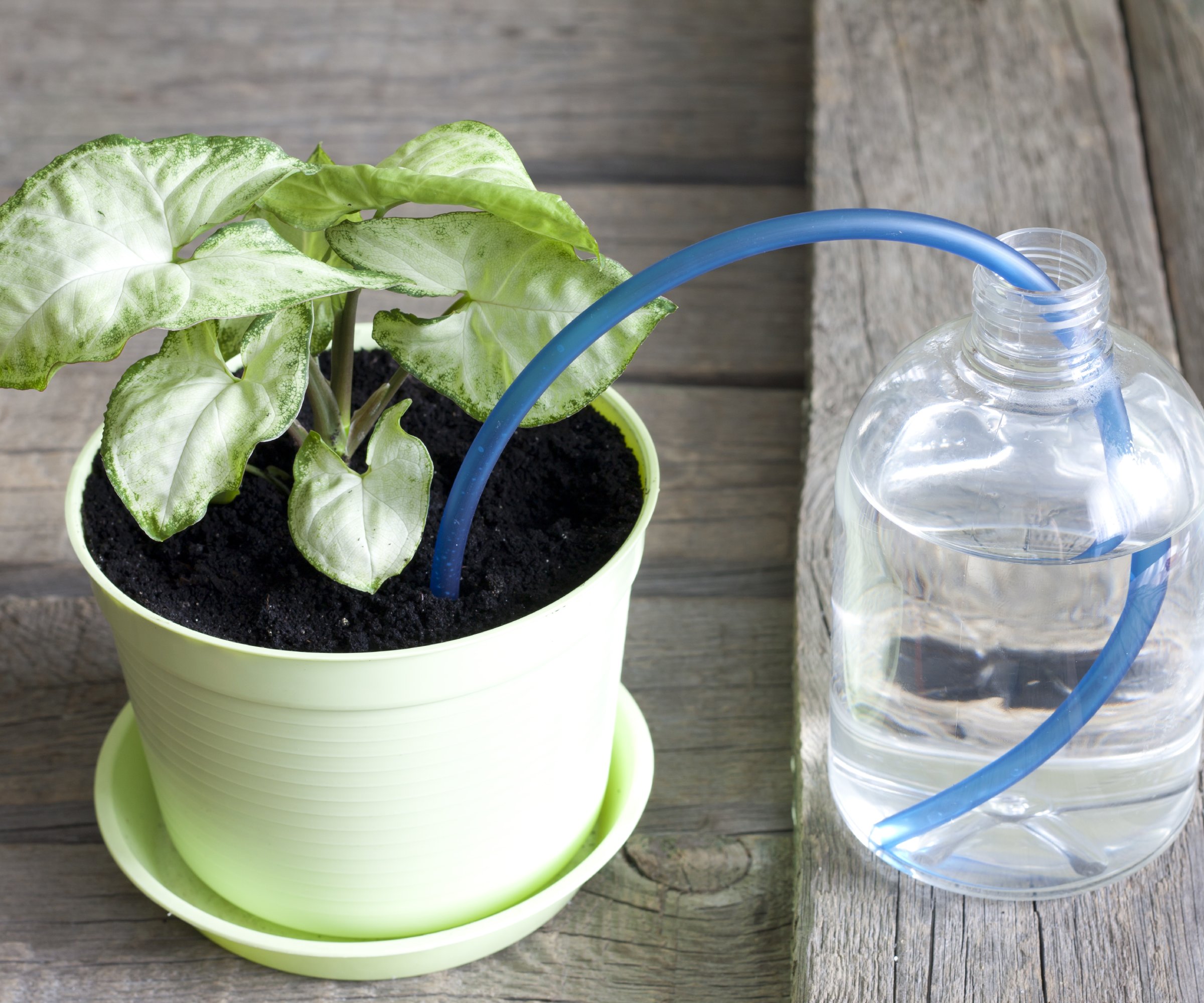What Is A Water Wick? How To Use One To Keep Houseplants Hydrated While You’re Away
A water wick for plants will give you a worry-free break if you need to leave your plant babies for a while. It’s easy to set up and pretty much runs itself.

If you’re a plant parent planning a vacation, you should know about the water wick for plants. What is a plant watering wick? Watering wicks for plants are pretty much what they sound like; it's a watering system that draws moisture to a plant's root systems using a porous material. You can purchase a water wick, or create a DIY plant watering wick.
What Is a Water Wick?
Water wicking is an age-old watering system from India wherein a porous line of fabric or rope is used to carry water to plants from a pipe or reservoir. This method may deliver water either quickly using gravity or slowly via capillary action. Sometimes both methods are employed to deliver a hybrid of both slow and rapid water delivery.
A more modern approach uses a used 2-liter plastic soda bottle but delivers the exact same results. Or, you can create a DIY water delivery system using the same ancient process but using a large container, PVC piping, landscape fabric and gravel.
Benefits of a Water Wick

A water wicking system has many benefits, the biggest of which, as mentioned, is there’s no need to hire a plant sitter water plants while you're on vacation, because the plants will water themselves.
Larger constructs like the DIY mentioned above are raised, making the planter easier to maintain and harvest. The reservoir from this DIY also captures rainwater for use and reduces runoff and nutrient loss. Plus, it saves space for those with limited garden space. As a container garden, this DIY project can be started earlier than in ground beds.
Surface soil stays dry since the water is wicking from the bottom at the root system which deters fungal gnats and other pests as well as diseases. It is also a more efficient way to water and will likely use less water than watering at the surface of the plant which loses water through evaporation.
How to Use a Water Wick for Plants
All you need to do to use a water wick is place a length of synthetic yarn cut twice the length of your plant container, through one of the drainage holes at the bottom of the container.
Sign up for the Gardening Know How newsletter today and receive a free copy of our e-book "How to Grow Delicious Tomatoes".
Then pull it through and up until it reaches the surface of the pot. Grasp the center of the yarn piece and hold it at the top of the pot while you thread the other loose end down and through a different drainage hole.
Place some pebbles in the bottom of a saucer that fits the plant container. Fill the saucer with water and set the pot in it, making sure the ends of the yarn are dangling into the water filled saucer. Voila. The yarn ends will wick water up and through the pot to the root system of the plant.
DIY Water Wick Ideas

One simple water wick idea is using an empty 2-liter soda bottle.
- Cut the bottle 8 inches (20 cm) from the top and cover the cut edges with duct tape.
- Spray paint the bottle black and allow it to dry.
- Cut a hole in the bottle cap large enough to thread a wick through. You can use nylon rope, felt, old fabric or blanket strips, yarn, etc as a wick.
- Thread the wick through the hole with half below and half above the hole.
- Fill the base of the cut soda bottle up to 4 inches (10 cm) below the top with water.
- Invert the top of the bottle with the threaded wick, cap side down into the bottom of the cut bottle. The wick should be in contact with the water.
- Fill the inverted top of the bottle with a potting medium and your plant.
Another idea for a water wicking system is a bit more complex but it has numerous benefits and is better fit for multiple or larger plants that obviously a 2-liter Coke bottle can’t accommodate.
In this scenario you will be using a large plastic container, a muck tub is perfect. Along with this you will need perforated pipe for use as a false bottom, 1.5-2 inch (4-5 cm) PVC pipe as a fill tube, peat moss will act as your wicking material, compost and potting soil, landscape fabric and gravel.
The idea is to create a ring of perforated pipe to be placed at the bottom of the muck tub out from which the PVC fill tube will protrude to the surface of the container. The landscape fabric is used to seal off the cut ends of the ends of the perforated pipe or false bottom.
A 4 inch (10 cm) layer of damp peat moss should then be added, topped by a mix of damp compost and potting soil.
To water the container, fill the fill tube with water. When the reservoir is full the water will run out of the drain hole.
Frequently Asked Questions
How effective is wick watering?
Water wicking is very effective. It uses less water and is more efficient since the water doesn’t evaporate then when plants are surface watered. It is also a convenient way to irrigate and an excellent solution for busy or out of town gardeners.
What is the best material for water wicks?
The best material for a water wick is variable and up for some debate. Synthetic fabrics work well since they resist water penetration and don’t rot as rapidly as natural material. It also depends on what type of wicking system you’re using. Some systems can use peat moss, sponge or charcoal cloth as the wicking material. Hemp or even wool materials are also options.

Amy Grant has been gardening for 30 years and writing for 15. A professional chef and caterer, Amy's area of expertise is culinary gardening.
